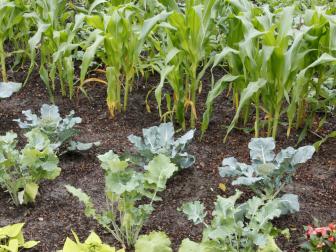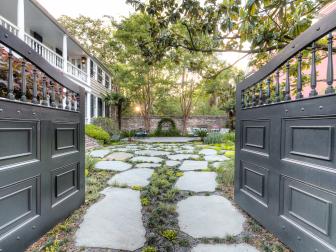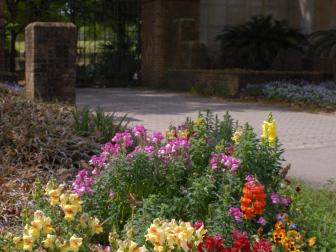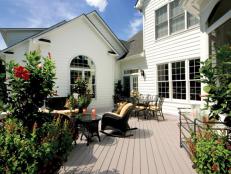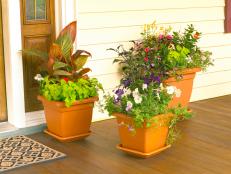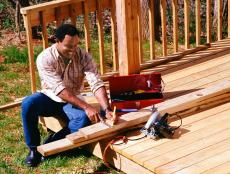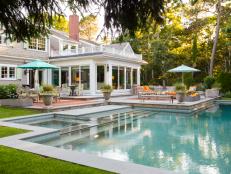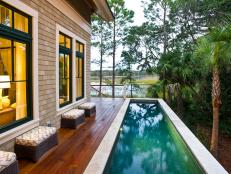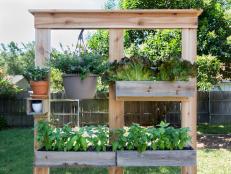How to Plan and Design a Garden
Design a garden that will inspire you for years to come. Learn how to make a garden that works for you.
Dig into designing a garden that will enhance your property value and fill your at-home time with beauty and inspiration. Learning how to make a garden really starts with asking yourself questions and checking out other gardens. By exploring what you want and need a garden to do, as well as how others have achieved their goals, you’ll be ready to plan a garden for yourself.
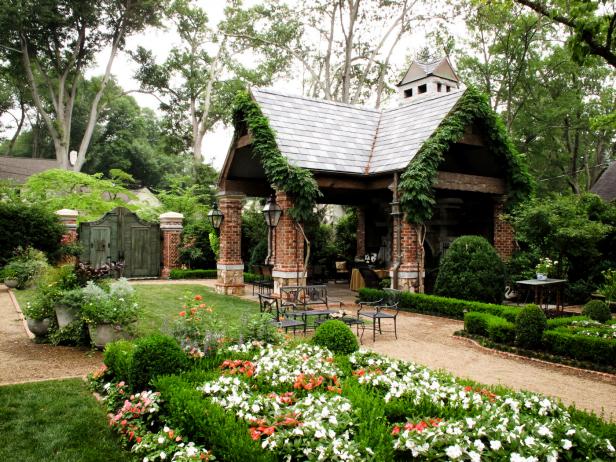
Kenny Collins, The Collins Group, Inc.
Choosing a Garden Style
Gardens vary from formal French garden designs to cheery cottage garden plans. You might be intrigued by the concept of a rain garden design as both a green landscape and a way to waive municipal stormwater runoff fees.
Or, maybe your inner chef wants to explore herb garden designs for the front yard and a serious vegetable garden plan for the back.
How to Plan a Vegetable Garden
HGTV can make vegetable garden planning less intimidating with tips on garden design and suggestions on how to choose vegetables to grow.
For family gatherings, you may consider an outdoor dining area tucked into an edible garden design with a cozy fire pit.
Or, maybe a stressful job has you seeking a Zen rock garden design that fosters relaxation and meditation. There truly is a garden to suit every design style and level of gardening experience.
Here's a quick explainer of several ornamental garden styles:
Cottage Garden: Cottage gardens are recognizable by their carefree style. These cheerful, relaxed gardens are full of colorful chaos. Some of our favorite cottage garden plants include: English lavender, foxgloves, daylily, delphinium, old-fashioned roses and clematis.
Formal Garden: Formal garden design is all about order and balance. Symmetrical plantings, well-defined paths and pruned plants all contribute to the formal ambiance of a garden. Formal gardens may include gravel paths, tightly clipped hedges (sometimes in intricate patterns such as with knot gardens) and tidy-looking trees such as formal pears.
Rain Garden: These gardens feature plants that thrive in areas that can become soggy due to extensive rainfall. They can serve to redirect rainfall runoff in your yard, which makes sloped properties potentially good candidates for ranifall gardens. Rain gardens also can soak up tremendous amounts of rain in your yard. Popular rain garden plants include purple coneflower, cardinal flower and black-eyed Susan.
Xeriscaping: This garden style is characterized by landscape that minimizes water use. This low maintenace style often makes use of grasses and succulents, but can feature all manner of drought-resistant plants, including lamb's ear which also is a favorite for cottage gardens.
Pollinator Garden: Attract beneficial pollinators, such as bees and butterflies, to your yard by planting a beautiful mix of annuals and perennials that will provide waves of blooms all season long. Native plants and wildflowers are great choices for pollinators. It's best to include a mix of flowers, vines, grasses, trees, shrubs and bulbs.
Container Garden: Small spaces like patios or balconies and areas with less-than-idea soil are great spots to grow your garden in containers. The opportunities for creativity are nearly endless — from using upcycled items as containers to choosing striking plant combinations.
Annuals & Perennials
You'll see plants tagged with these words in garden centers. So, what's the difference? Annuals accomplish their reproduction, or life cycle, in one growing season. While bright and showy — a great way to add color to your garden — annuals will need to be replanted every year. Many vegetables, inlcuding tomatoes and peppers, are annuals. Perennials, on the other hand, come back every year. These are good choices for foundational plantings and for low-maintenance color.
What’s the Difference Between an Annual and a Perennial?
Should you pick annuals or perennials when planting your garden? Here's a rundown on the differences between these two types of plants and the pros and cons of each.
Creating a Garden Design
Sift through the possibilities by determining goals for your garden. Then, before you start to design a garden, look for inspiration. Every garden you see can serve as inspriation in the process of designing a garden.
Browse photo galleries online to discover the myriad options before you. Take advantage of local garden tours to see actual gardens and yards that might approximate yours in terms of size and house style, or take a walk through your neighborhood to gather ideas. If a plant grows well at your neighbor's house, given the same conditions — sun, soil and water — it should grow well at your house too.
Award-Worthy Gardens
These relaxing retreats featured in the HGTV Ultimate Outdoor Awards are lush, lovely and full of breathtaking greenery.
Check local garden centers to see if they offer workshops on how to make a garden. Many times these types of workshops equip you to tackle designing and installing a garden. In this type of setting, you can often get your toughest questions answered by an expert for a minimal fee. This is a great option when you have the confidence to plan a garden but have a few key challenges to address.
Garden planner software can take the guesswork out of how to plan a garden, giving you three-dimensional options and walk-throughs that help you determine placement of different areas. In-depth plant encyclopedias can help you make plant choices quickly, and you can also explore different hardscape options with the click of a button.
Consider Your Space
When designing a garden, it can be helpful to divide your yard into public, private and service areas. The public areas are the ones others see, like the front yard and entry. The private sections include back or side yards, outdoor living areas and decks. A service area is something like a play structure, compost pile, garbage can storage or dog run.
Stroll through your property and record any specific conditions. Pay attention to the amount of light your property receives throughout the day — watch how sunlight moves from morning into late afternoon.
Grab a tape measure and note the size of your proposed garden area, including locations and dimensions of existing structures, such as your home, garage, patio, deck or storage shed. Also take note of any significant items in the landscape, like a slope or septic field.
Also, consider whether there's a view you want to screen, a tree that needs to be trimmed or a spot where grass won’t grow.
Use Your Imagination
Consider the garden layout you want and craft a wish list. Include every item you want to see in the garden design plan, whether it’s doable today or 10 years from today.
Turn your imagination loose and incorporate things like the water feature you’ve always wanted, a backyard garden swing or a rose-covered trellis. If your family loves blueberries, include a berry patch on your wish list.
What's Your Garden Budget?
Seriously weigh your budget. Consider what funds you have available today and ways to implement the garden design plan in stages. Swapping materials is one way to pinch pennies today, with a long-range goal of upgrading items. For instance, a landscape tie retaining wall is cheaper than a dry-stone one, and a mulched path costs less than pavers. Explore garden layout ideas that embrace versatility over time.
Garden Design for Under $100 13 Photos
For less than $100, you can add color, shape and vibrancy to your garden or yard. Try these tips.
When you learn how to plan a garden in a garden center-sponsored workshop, you’ll probably also get a discount on any plants you purchase. Take advantage of these opportunities to save money and trim your plant budget. You can always apply funds saved to another aspect of your garden.
If you’re dealing with terracing or grading issues, it’s worth the effort to consult with a garden designer. Their professional training and contacts can help you navigate potential, costly problems with ease. You might also want to visit with a garden designer to review a garden plan you have developed, especially if you have any doubts about your design or your ability to install it. A garden designer can refine your vision and confirm — or allay — your fears.
Above all, don’t rush. If you’re unsure which way to proceed in a certain area, pause. The reward of creating an effective garden design layout is definitely worth any wait.








